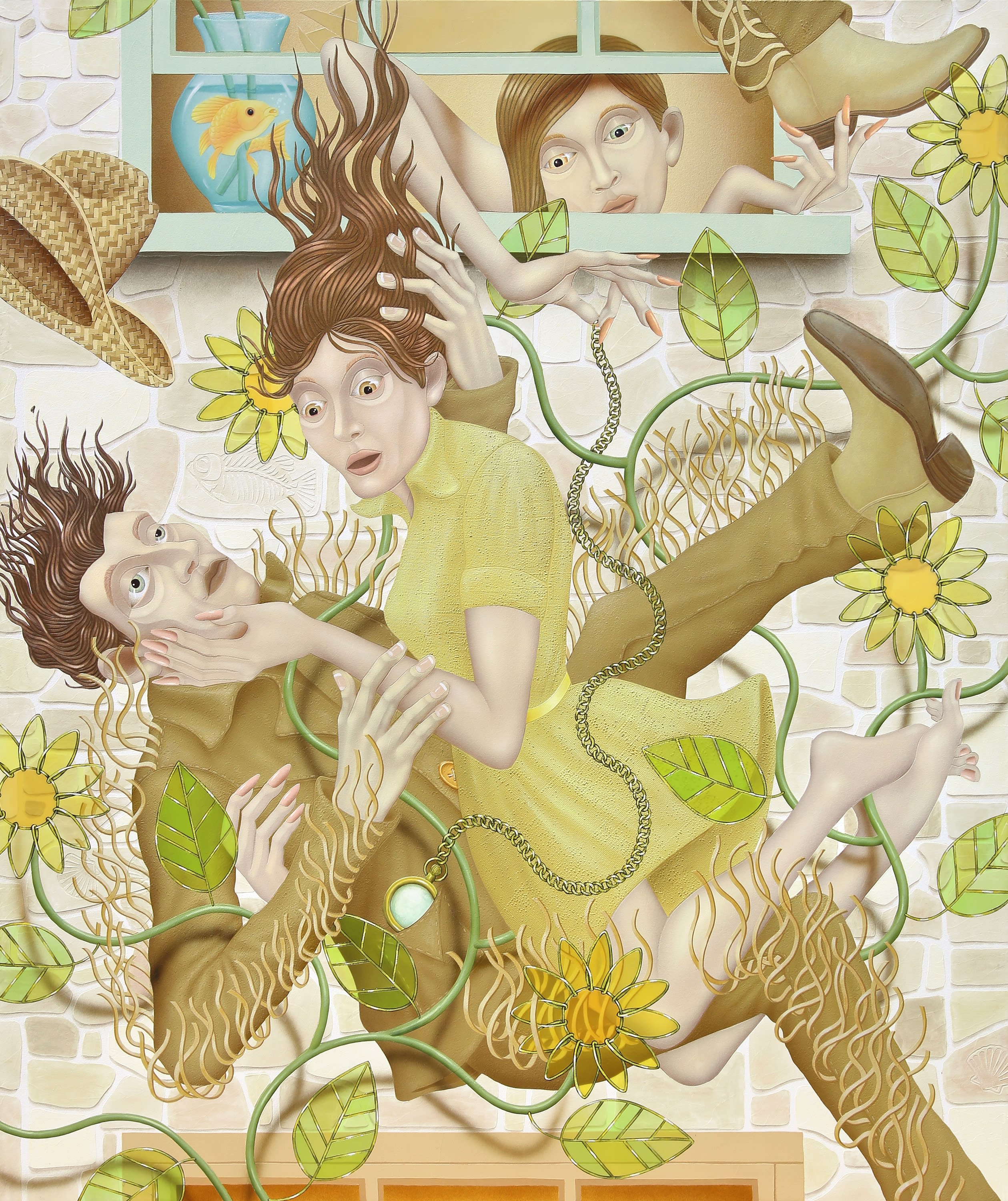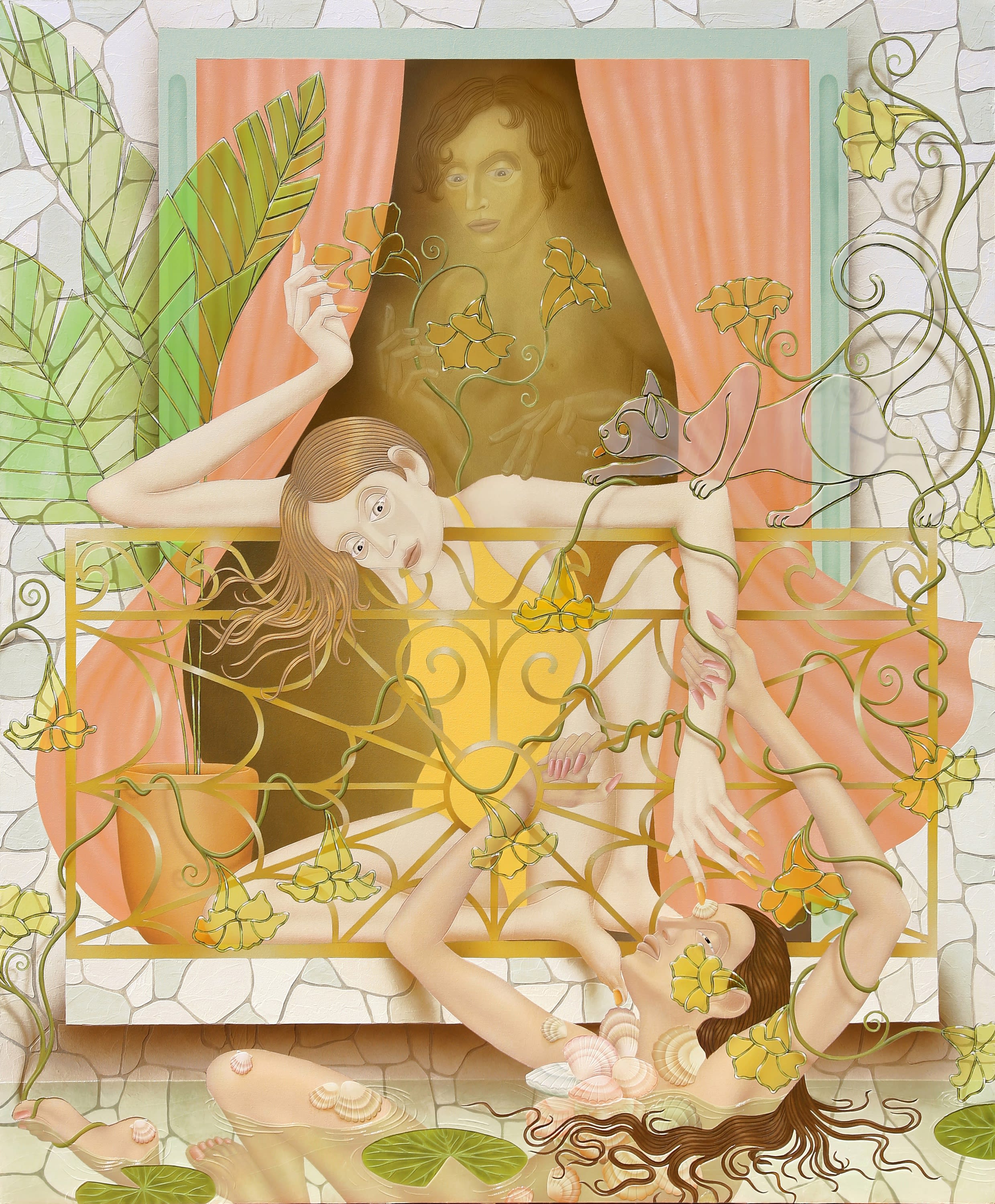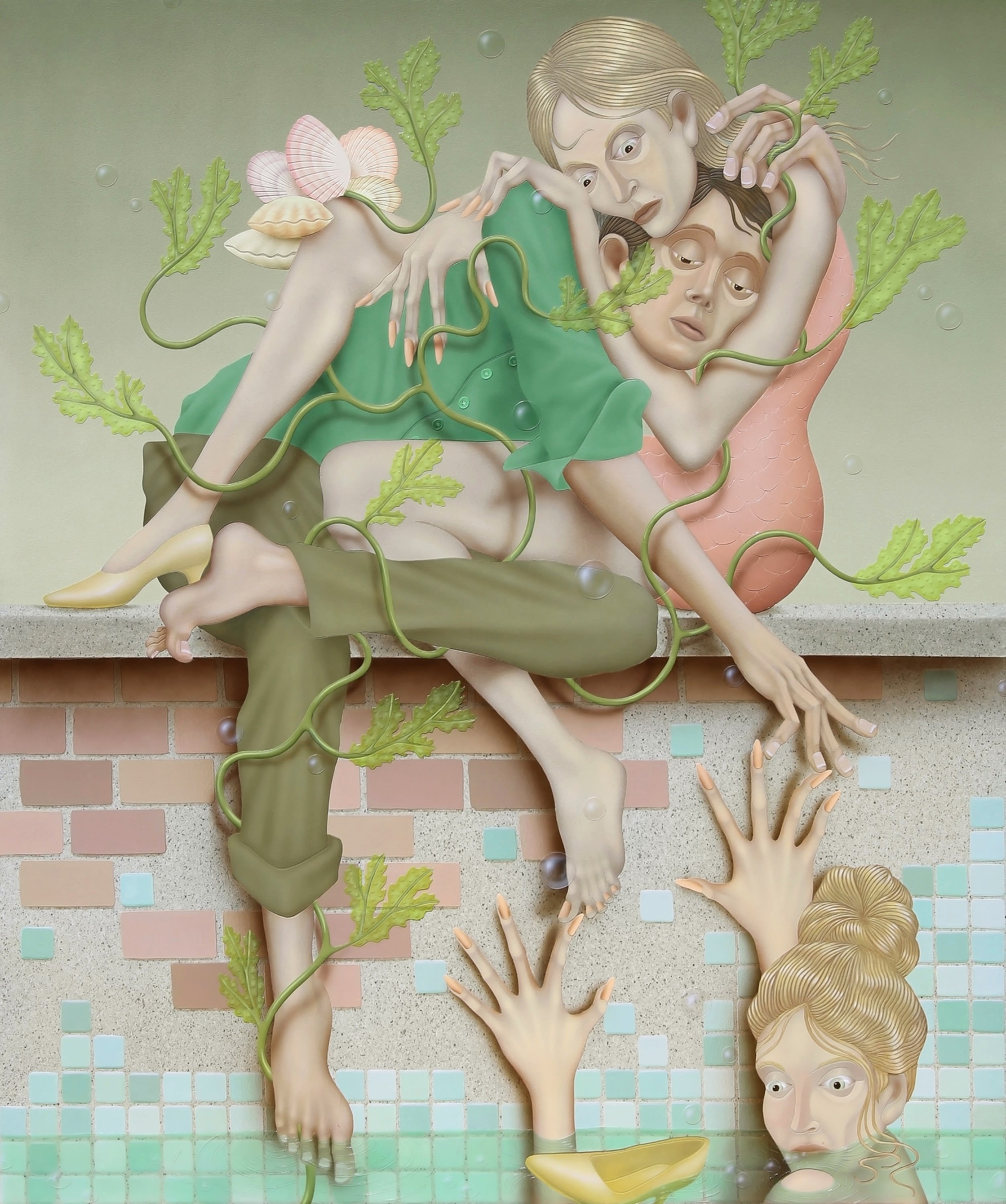Wendell Gladstone, “Lover’s Knot”
by David S. Rubin
In all paintings but “Passion Premonition,” which functions as a prelude to the other works, three figures — a man and two women — are shown amidst undulating vines and floral motifs that are intended to signify the human connections to one another, as well as to the larger universe. Beyond that it is unclear what is taking place. The cast of characters could be a throuple, but the multiple women depicted in a single composition could be the same person in two separate moments, or two women from different relationships over time.
 Wendell Gladstone, “Head Over Heels,” 2025, acrylic on canvas, 71 x 59”.
Wendell Gladstone, “Head Over Heels,” 2025, acrylic on canvas, 71 x 59”.“Passion Premonition” pays tribute to the power of human touch. Seated before a fireplace, a man and woman feel a spark as they gaze at their touching fingers. Immersed in the flames behind them is an apparition of the two kissing. Meticulously rendered in a warm palette that integrates matte and glossy surfaces, the painting radiates a sensual energy. Subtle details imply that what lies ahead may not be an easy road. Burning candles on the mantle, for example, suggest that the relationship may be temporary, while the presence of a cat and several mice hint at games of control and deception.
Considerably more agitated and ambiguous in meaning, all of the other scenarios are staged on a balcony or ledge, with frenzied figures falling downward in a manner that recalls the nightmarish 1980s paintings of Robert Yarber. But, whereas Yarber’s angst-ridden figures are shown descending into vast cityscapes at night, Gladstone’s lovers are presented in daylight and at close range.
 Wendell Gladstone, “Between Worlds,” 2025, acrylic on canvas, 72 x 60”.
Wendell Gladstone, “Between Worlds,” 2025, acrylic on canvas, 72 x 60”.The compositional pull is particularly forceful in “Head Over Heels,” where the rapid movement of a falling couple is reinforced by the undulations of vines that entangle them interacting with the rope from a pocket watch loosely tucked into the man’s pocket. Narrative intrigue is established by a woman peering through the window at the top. She appears to be controlling the action, pinching the watch’s rope with her right hand like a puppeteer. The fingers of her left hand gently tickle the heel of the man’s boot, which is incongruously cut off at the painting’s lower edge and relocated to the upper right corner. In having his instigator just barely touch the objects, Gladstone calls attention to the potential for sensuality in moments of physical contact, as well as to the transmission of one person’s energy to another.
Gladstone’s new paintings are technically and aesthetically accomplished without sacrificing emotional charge. They also gain in potency as we attempt to decode what we are seeing. Yet what we see and feel may not always be consistent with the artist’s stated intentions. According to the press release, the architectural elements in this series are supposed to be “extensions of the figures themselves, echoing the energy of the relationships they contain.” To some extent, this is applicable to “Between Worlds,” because the balcony railing and trapezoidal brick patterns effectively merge with the vibrantly swirling movements of the vines and foliage, which are undeniably animated.
 Wendell Gladstone, “Both Sides of Me,” 2025, acrylic on canvas, 71 x 59”.
Wendell Gladstone, “Both Sides of Me,” 2025, acrylic on canvas, 71 x 59”.In “Both Sides of Me,” however, the volumetric geometry and tactility of the wall surface seem to negate the idea that the structure is metaphorically pulsating. Rather, they emphasize that it is a solid, static entity. In interpreting Gladstone’s work, along with much of today’s narrative art where the storylines are coded or obscured, the question we should be asking is not “What does it mean?”, but simply, “What could it mean?” When answering that question, it is always you the viewer who completes the circle.

